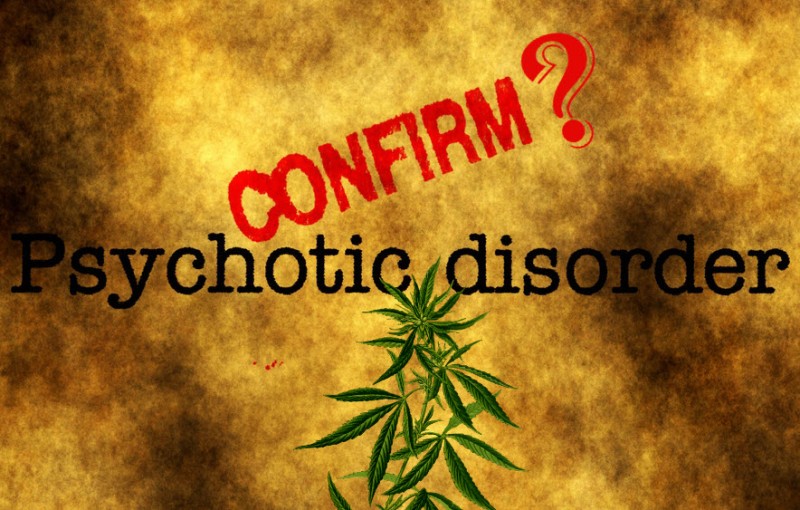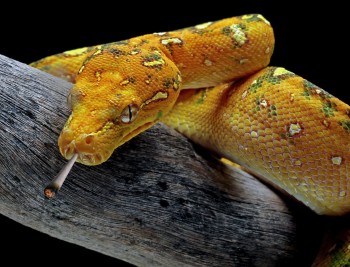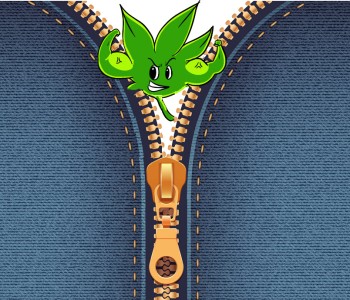
New Study Claims Cannabis-Psychosis Link, But Is the Evidence Half-Baked?
A new study published in JAMA Psychiatry is making waves with claims of having found the biological "smoking gun" that links cannabis use to psychosis. As someone who's spent years analyzing cannabis research, I'm always interested when scientists announce breakthrough findings—but I'm equally committed to examining such claims with a critical eye.
Researchers from London Health Sciences Centre Research Institute and Western University's Schulich School of Medicine & Dentistry used brain imaging techniques to examine individuals with cannabis use disorder. They report finding signs of higher dopamine levels in the same regions of the brain associated with psychosis, suggesting a "straight line linking cannabis with dopamine and psychosis that has never been shown before."
That's a bold claim, and if true, would represent a significant development in our understanding of cannabis' effects on the brain. The study's lead author, Lena Palaniyappan, didn't mince words, stating it's "crucial that clinicians, patients, and families work together to break this line."
But before we sound the alarm bells, we need to ask some important questions. Is this truly the definitive evidence it's being presented as? Does the methodology stand up to scrutiny? And how should we interpret these findings in the broader context of cannabis research?
In the age of legalization and increasing normalization of cannabis use, understanding potential risks is essential. But equally important is making sure that research is sound, interpretations are measured, and that we don't fall into the trap of exaggerating risks based on limited evidence—something that has plagued cannabis research for decades.
Let's dive into this study, examine what it actually found, and separate the facts from the hype.
The Study's Claims: A 'Smoking Gun' or Smoke and Mirrors?
The Canadian study published in JAMA Psychiatry used a technique called neuromelanin-sensitive magnetic resonance imaging to examine the brains of 61 participants aged 18-35. The researchers were looking for neuromelanin—a black pigment that accumulates over time if there's excess dopamine in the brain. These appear as "black spots" in brain scans and serve as a marker for dopamine activity.
According to the researchers, individuals with cannabis use disorder showed darker spots in a midbrain region associated with psychosis—specifically the substantia nigra and ventral tegmental areas—compared to non-users. Palaniyappan claimed these spots were "blacker than what they should be for their age" and in some cases showed "pigments someone 10 years older would have."
The study included both people with and without cannabis use disorder, and some participants in each group had also been diagnosed with first-episode schizophrenia. This allowed them to compare the effects of cannabis use independent of psychosis diagnosis.
Dr. Julie Richard, a psychiatrist involved with the research, framed the findings dramatically, calling them "the smoking gun" that provides clues about "why exposure to cannabis is causing brain changes linked to psychosis." She also reported seeing adolescents experiencing "two or three brief cannabis-induced episodes of psychosis" before having a "much more major episode" in clinical practice.
The researchers connect their findings to observations that emergency departments across Canada have seen more people presenting with psychosis since cannabis legalization, suggesting a causal relationship between increased access to cannabis and psychosis rates.
While these findings shouldn't be dismissed outright, there are several aspects of the study that warrant closer examination before we accept the "smoking gun" characterization.
First, the sample size of 61 participants is relatively small for drawing broad conclusions about cannabis effects. The researchers don't clearly specify how many participants fell into each subgroup (cannabis users with schizophrenia, cannabis users without schizophrenia, non-users with schizophrenia, and healthy controls), making it difficult to assess the statistical power of their comparisons.
Second, the study focuses specifically on individuals with "cannabis use disorder"—not casual or occasional users. This distinction is crucial, as cannabis use disorder represents a clinical diagnosis of problematic use that affects only a small percentage of cannabis consumers.
Third, while the neuromelanin imaging technique is innovative, using it as a proxy for active dopamine levels involves several interpretive steps. Neuromelanin accumulates over time and may reflect historical patterns of dopamine activity rather than current states. The direct link between these accumulated markers and active psychosis risk requires further validation.
Critical Questions About Methodology and Interpretation
As we dig deeper into this study, several methodological questions emerge that should give us pause before accepting its conclusions as definitive.
Perhaps the most fundamental issue is the age-old scientific principle: correlation does not equal causation. The study demonstrates an association between cannabis use disorder and increased neuromelanin deposits, but cannot definitively establish that cannabis use caused these changes. It's equally possible that individuals with certain neurobiological characteristics are both more likely to develop problematic cannabis use patterns and to have altered dopamine systems.
The researchers don't adequately address potential confounding factors. For instance, did they control for prior use of other substances? Tobacco, alcohol, and other drugs can all affect dopamine systems. Similarly, stress levels, trauma history, and even genetic factors could influence both cannabis use patterns and dopamine regulation.
The definition of "cannabis use disorder" itself requires scrutiny. How was this diagnosed in study participants? Was it based solely on frequency of use, or did it incorporate other factors like functional impairment or unsuccessful attempts to cut down? The distinction between heavy recreational use and a clinical disorder is important yet often blurred in cannabis research.
Another crucial limitation is the lack of information about the types of cannabis products used by participants. Modern cannabis products vary dramatically in their THC:CBD ratios, with high-THC products potentially carrying different risk profiles than balanced or CBD-dominant options. Without this information, it's difficult to know if the findings apply equally to all cannabis consumers or primarily to those using high-potency products.
The methodology also doesn't address directionality. Do these dopamine-related changes precede cannabis use, suggesting they might be risk factors rather than consequences? A longitudinal study design would be necessary to establish temporal relationships.
The researchers' claim about increased emergency department visits for psychosis after legalization also deserves scrutiny. While such trends may exist, many factors could contribute to them besides increased cannabis use—including greater willingness to seek help for cannabis-related issues after legalization, changes in emergency department reporting practices, or other societal factors coinciding with the legalization timeframe.
One particularly striking omission is the lack of discussion about potential pre-existing vulnerabilities. Research has consistently shown that cannabis-associated psychosis risk is not distributed equally across the population—genetic factors, family history of psychosis, childhood trauma, and prior mental health issues all play important roles in determining individual risk. Treating cannabis as the primary or sole factor oversimplifies a complex relationship.
The researchers' framing of cannabis as essentially harmful also overlooks the possibility that different use patterns may have different risk profiles. Is occasional use as problematic as daily use? Does the age of first use matter? These nuances are lost in the broad characterization of cannabis as a risk factor for psychosis.
Putting the Findings in Context: The Broader Research Landscape
To properly evaluate this study, we need to place it within the broader context of cannabis and psychosis research—a field that has produced mixed and sometimes contradictory results.
While some research has indeed found associations between cannabis use and psychosis risk, the relationship is complex. A 2019 Lancet Psychiatry study suggested that daily use of high-potency cannabis was associated with increased psychosis risk in certain European cities. However, other large-scale studies have found more modest associations or failed to establish clear causal relationships after controlling for confounding factors.
The endocannabinoid system—the body's natural cannabinoid network—plays a crucial role in brain development, particularly during adolescence. This is why most researchers and cannabis advocates alike agree that young people should avoid cannabis until their brains mature (typically into the early 20s). The current study reinforces this prudent approach without necessarily establishing new ground.
Age-related risks are particularly important. The developing brain appears more vulnerable to potential cannabis-related harms, which is why focusing prevention efforts on adolescents makes sense regardless of one's position on adult cannabis use. This nuance is sometimes lost in broader debates about cannabis policy.
What's often missing from discussions of cannabis risks is acknowledgment of potential benefits from regulated markets. Legal markets enable product testing, accurate labeling, age restrictions, and public education—all of which can reduce harms associated with cannabis use. The alternative—prohibition—has demonstrably failed to prevent youth access while exposing consumers to untested products and criminal penalties.
It's also worth noting that cannabis research often suffers from publication bias, with studies finding negative outcomes more likely to receive funding and publication than those finding neutral or positive effects. This creates a skewed picture of the evidence base that can exaggerate perceived risks.
Another important contextual factor is the significant evolution of cannabis products over time. Today's market includes options ranging from high-THC concentrates to CBD-dominant products with minimal psychoactive effects. Research that doesn't differentiate between these products may miss important variations in risk profiles.
The relationship between cannabis and mental health is bidirectional—many individuals report using cannabis to self-medicate symptoms of anxiety, depression, or even early psychosis symptoms. This complicates the causal picture and highlights the importance of addressing underlying mental health needs regardless of cannabis use.
Finally, population-level data provides valuable perspective. Despite significant increases in cannabis use over recent decades and the rise of higher-potency products, we haven't seen corresponding population-level increases in psychosis rates that would be expected if cannabis were a major causal factor. This doesn't negate individual risk, but it does suggest the relationship is more nuanced than sometimes portrayed.
The Sticky Bottom Line: Prudence Without Panic
As we sift through the evidence and claims surrounding this study, a balanced perspective emerges—one that acknowledges potential risks without falling into alarmism or exaggeration.
First and foremost, there's broad agreement that adolescents should avoid cannabis use while their brains are still developing. The study adds to existing evidence suggesting that early, heavy cannabis use may affect brain development, though the precise mechanisms and long-term implications remain areas of ongoing research. This is one area where cannabis advocates, researchers, and public health officials can find common ground.
However, the framing of this study as providing definitive evidence of a "straight line" between cannabis and psychosis overstates the findings. The research shows an interesting correlation that warrants further investigation, but falls short of establishing the causal relationship implied by the researchers' statements to media.
What's clear is that we need more nuanced research examining different cannabis products, consumption methods, and patterns of use across diverse populations. The current study's focus on cannabis use disorder—rather than cannabis use more broadly—highlights the importance of distinguishing between problematic and non-problematic consumption patterns.
For adult consumers, these findings suggest the value of moderation and mindfulness about consumption habits. If you find your cannabis use becoming problematic or affecting your daily functioning, that's worth addressing regardless of potential psychosis risk.
For policymakers and public health officials, the results underscore the importance of regulated markets that include evidence-based education, clear product labeling, and age restrictions. Focusing on harm reduction rather than prohibition can help address legitimate concerns while respecting adults' autonomy to make informed choices.
As cannabis continues its journey from prohibition to regulation, we need research that moves beyond simplistic questions about whether cannabis is "good" or "bad" toward more sophisticated analyses of how different products affect different people in different contexts. The current study makes a contribution to this evolving understanding, even if its findings have been somewhat overstated.
In the meantime, let's approach cannabis with both appropriate caution and healthy skepticism about research claims—especially those that seem designed to provoke fear rather than promote understanding. The path to truly evidence-based cannabis policy requires nothing less.
SOURCE: www.lhscri.ca/news/new-study-reveals-potentia
l-biological-link-between-cannabis-use-and-psychosis/
CANNABIS AND PSYCHOSIS, READ ON...
LEGALIZATION DOES NOT LEAD TO AN UPTICK IN PSYCHOSIS






